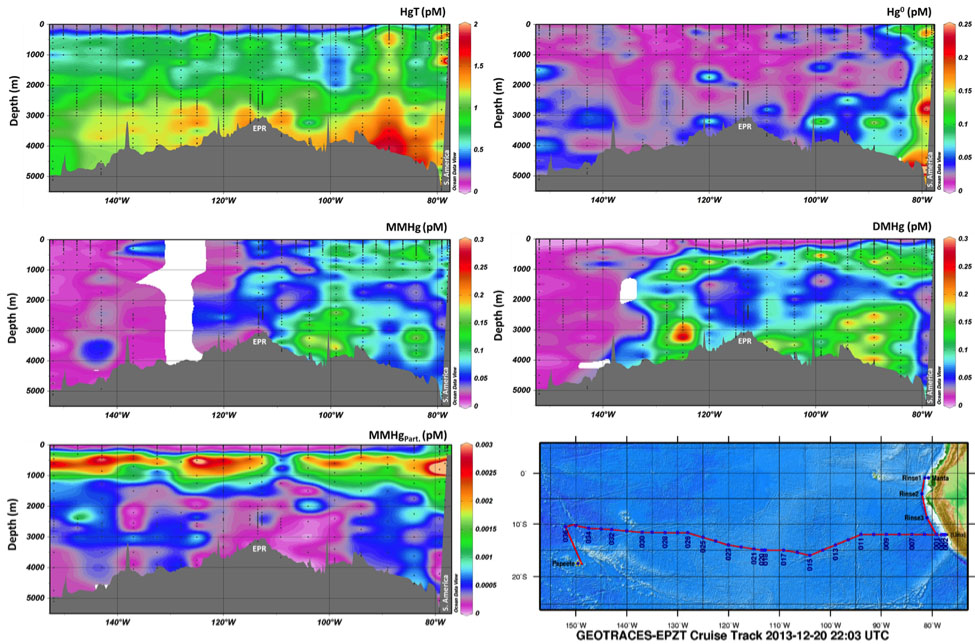Up to four mercury species measured along the GEOTRACES East Pacific Zonal Transect
Total mercury (HgT), elemental mercury (Hg0), monomethyl-mercury (MMHg), and dimethyl-mercury (DMHg) were measured at an unprecedent resolution so far along the East Pacific Zonal Transect (EPZT) GEOTRACES cruise (GP16). Knowing that MMHg is a neurotoxin that accumulates in the trophic chain, establishing the full speciation of this element is required in order to better understand oceanic Hg cycle and more specifically where and how MMHg is formed and accumulated.
The other exciting feature of this article is that contrasted biogeographic oceanic provinces have been sampled during EPZT (Peru upwelling region, a suboxic OMZ, and an expansive submarine hydrothermal vent plume).
Bowman and co-authors results show that while HgT is not enriched in the hydrothermal plume, total Hg is accumulated with age and that DMHg is the dominant methylated species in deep waters. Importantly, filtered HgT is accumulated in upwelled waters near the coast of Peru where oxygen concentrations were the lowest, and MMHg represented 10–20% of the total Hg upwelling flux. This is the first identification of Hg behaviour along the Peru coast, a region that supports the largest fisheries of the world…

Figures: Images depict mercury concentrations in the water column from the coast of Peru (right), across the Eastern Pacific Rise (EPR), to Tahiti (left), measured during the 2013 U.S. GEOTRACES Eastern Pacific Zonal Section. Total mercury (HgT), gaseous elemental mercury (Hg0), methylmercury (MMHg), and dimethylmercury (DMHg) in filtered water is shown, in addition to methylmercury in suspended particles (MMHgpart.). Click here to view the figure larger.
Reference:
Bowman, K. L., Hammerschmidt, C. R., Lamborg, C. H., Swarr, G. J., & Agather, A. M. (2016). Distribution of mercury species across a zonal section of the eastern tropical South Pacific Ocean (U.S. GEOTRACES GP16). Marine Chemistry, 186, 156–166. DOI: 10.1016/j.marchem.2016.09.005
